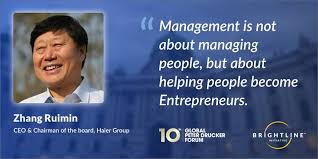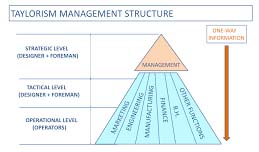Business Transformation – How to be successful

I’ve been working in the transformation consulting industry for the last 25 years, and I like to think that I’ve accrued a few nuggets of wisdom along the way.
So here is one for you.
Top-down change programmes rarely deliver the hoped-for benefits.
Why? Because the direction generated at the top of an organisation doesn’t always align to the lived experience of those carrying out actual work.
A Harvard Business Review article written by two Harvard Professors estimated that 70% of change initiatives fail to deliver on their objectives.
Those that did deliver had trouble with sustainability over time. The way we’re doing organisational change from the top down isn’t working.
After years of consulting in the public and private sectors, I’ve found almost all the transformation programmes instigated by budget holding leadership teams were in crisis and produced a smaller version of the status quo, missing more fantastic opportunities for innovation along the way.
And there’s the rub. Most leadership teams only launch transformational initiatives in crisis, when action is about survival rather than evolution. Transformation becomes about short term improvements rather than long term strategic change, which has the opposite effect regarding unlocking employee potential. Staff become quiet, subdued, and alienated.
So, what can be done?
Transformation programmes need to be more successful. A 70% failure rate is abysmal.
Organisations need to evolve and change over time to survive. It is the natural way of things, just as mammals have adapted to changing environmental conditions.
There is evidence abound that grassroots-led transformations are far more effective.

I was interested in reading the results of a year-long research project by two Dutchmen, Joost Minnaar and Pim De Morree, otherwise known as the Corporate Rebels. These two innovators are on a mission to record some of the most exciting places to work and innovative people to work for. They aim to ‘make work more fun.
Early in their travels, they met with Zhang Ruimin, CEO of the Haier Group based in Qingdao, China.

They said that straight away, two things were evident.
Firstly, that Zhang had a long-term view about transformation. According to Joost and Pim, Zhang had studied the Fortune 500 disease where 90% of the original list were no longer on it. This suggests that these dinosaur businesses had failed to evolve and regulate to their changing environments.
He said, “there is no such thing as success in transformation. It is adapting to changing times. We try to change before a crisis strikes”.
Secondly, Zhang used a new metaphor to describe the Haier organisation. Living and working in the internet era, they adopted a very different approach to hierarchy.
“With the RenDanHeYi model, we moved away from being something like an empire, to more like a rainforest, with an open network platform.”
To make sense of the RenDanHeYi model, think about the trees in a rainforest being open ecosystems. They have insects, other plants, and all kinds of things that make up this tree’s biology. It’s also an open system; new creatures can come into the system or leave and go and live on another tree. These trees are constantly adapting to the seasons and changing nature of the planet.
Zhang used his study of western organisations to create small business cells in the organisation. When I read this, I immediately thought about the Toyota Way of creating manufacturing cells which were tremendous at focusing resources and reducing waste. My reading of Zhang’s approach was that by moving his organisation from a hierarchy to a network, he could strip back bureaucracy allowing the maximum number of staff to become productive.

For the management layers, many of their jobs changed or disappeared altogether. For the leadership group, it meant relinquishing the reins of command and control synonymous with the power pyramids of Taylorism. At Haier, a leader serves the cellular business units, not the other way around, and transformation is part of everyday work. Cells are connected and co-dependent, helping the ecosystem of the organisational forest.
Haier’s business cells may have internal, or external markets. Irrespective of this, each cell has agency and responsibility. They control their budgets, revenues, suppliers and most importantly, are close to their customers.
Zhang is not the only one to adopt this network model; there are many other examples worldwide. They’re not all using Zhang’s rain forest metaphor, but in one way or another, they’re pushing decision making towards people who know what’s going on.
I’ve included a link to a previous blog that may give you an alternative approach to transformation HERE
Revealing the leadership secrets for a successful business
Lessons from high performing business leaders
